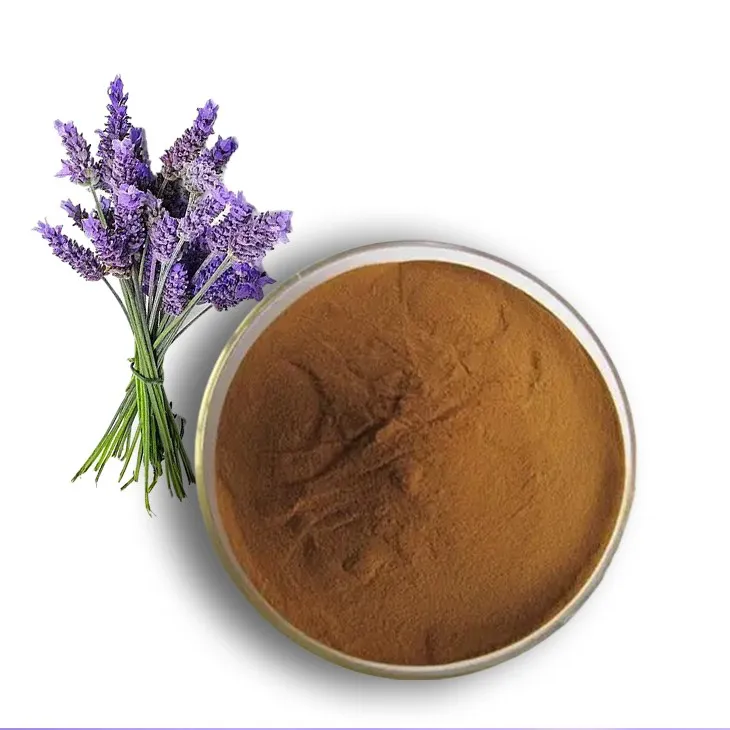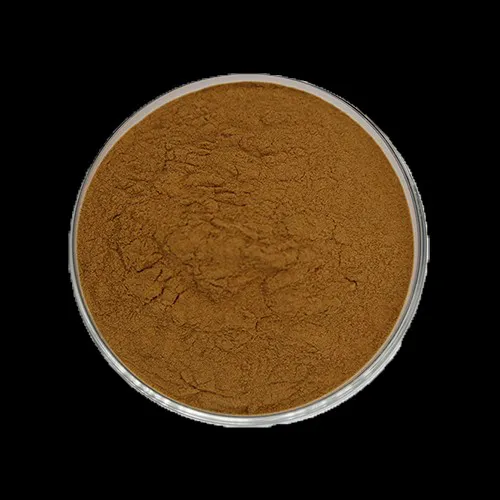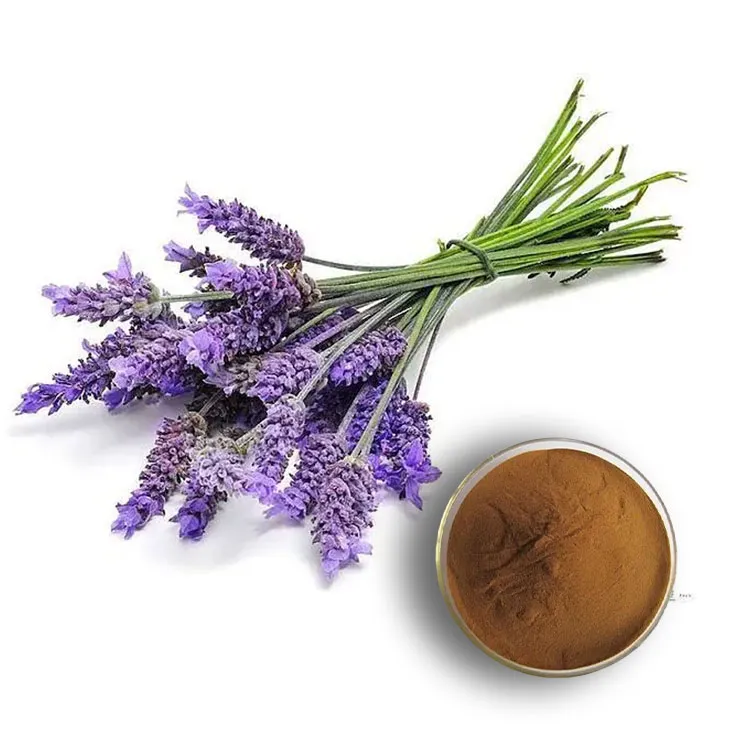- 0086-571-85302990
- sales@greenskybio.com
The Magic of Lavender Extract Powder: A Comprehensive Guide
2024-11-12

1. Introduction
Lavender Extract powder is a truly remarkable substance that has been captivating people for centuries. It is derived from the lavender plant, a beautiful and fragrant herb known for its calming and therapeutic properties. This powder has found its way into numerous industries, including cosmetics, aromatherapy, and medicine, due to its wide range of benefits. In this comprehensive guide, we will explore the magic of Lavender Extract powder, from its origins and extraction methods to its diverse applications.

2. Origins of Lavender
Lavender is native to the Mediterranean region, where it has been growing wild for thousands of years. The plant is well - adapted to the warm, dry climate of this area and can be found in countries such as France, Italy, and Spain. It was highly prized by the ancient Greeks and Romans, who used it in perfumes, baths, and as a medicinal herb. Over time, lavender cultivation spread to other parts of the world, including England and North America.

3. The Lavender Plant
Lavender is a member of the mint family, Lamiaceae. It is a perennial plant that typically grows to a height of about 1 - 3 feet. The leaves are narrow and lance - shaped, and the flowers are arranged in spikes at the top of the stems. The color of the flowers can vary from pale purple to deep violet, depending on the variety. There are many different species and cultivars of lavender, each with its own unique characteristics.

4. Extraction Methods of Lavender Extract Powder
4.1 Solvent Extraction
One of the most common methods of extracting lavender extract powder is solvent extraction. In this process, a solvent such as ethanol or hexane is used to dissolve the active compounds in the lavender plant. The plant material is soaked in the solvent for a period of time, and then the solvent is evaporated, leaving behind the concentrated extract. This method is effective in extracting a wide range of compounds, but it does require the use of solvents, which may need to be removed carefully to ensure the purity of the final product.
4.2 Steam Distillation
Steam distillation is another popular method for obtaining lavender extract. In this process, steam is passed through the lavender plant material, causing the volatile oils and other active compounds to vaporize. The vapor is then condensed, and the resulting liquid contains the lavender extract. Steam distillation is a more natural method compared to solvent extraction, as it does not involve the use of solvents. However, it may not be as effective in extracting certain non - volatile compounds.
5. Chemical Composition of Lavender Extract Powder
Lavender extract powder contains a variety of chemical compounds that contribute to its unique properties. Some of the key components include linalool, linalyl acetate, cineole, and camphor. Linalool is a fragrant alcohol that gives lavender its characteristic sweet floral scent. It also has antimicrobial and anti - inflammatory properties. Linalyl acetate is an ester that is responsible for much of the calming and relaxing effects of lavender. Cineole and camphor are also present in smaller amounts and may contribute to the overall therapeutic properties of the extract.
6. Applications in Cosmetics
6.1 Skin Care
Lavender extract powder has numerous benefits for the skin. It is often used in skin care products such as creams, lotions, and serums. It has anti - inflammatory properties, which can help to soothe irritated skin. It can also be beneficial for acne - prone skin, as it has antibacterial properties that can help to reduce the growth of acne - causing bacteria. Additionally, lavender extract powder can help to improve the overall appearance of the skin by promoting cell renewal and reducing the signs of aging.
6.2 Hair Care
In hair care, lavender extract powder can be used to improve the condition of the hair. It can help to soothe an itchy scalp and reduce dandruff. It can also add shine and softness to the hair. Some hair products contain lavender extract powder as a natural alternative to synthetic fragrances and conditioners.
7. Applications in Aromatherapy
Lavender is one of the most popular essential oils used in aromatherapy, and lavender extract powder can also be used in similar ways. The scent of lavender is known for its calming and relaxing effects. It can be used to relieve stress, anxiety, and insomnia. In aromatherapy, lavender extract powder can be used in diffusers, inhalers, or added to bath products. When inhaled, the aromatic compounds in the lavender extract can stimulate the olfactory receptors in the nose, which in turn can send signals to the brain to induce a state of relaxation.
8. Applications in Medicine
8.1 Anti - Inflammatory Properties
The anti - inflammatory properties of lavender extract powder make it potentially useful in treating various inflammatory conditions. It may be beneficial for conditions such as arthritis, where inflammation in the joints can cause pain and stiffness. Studies have shown that lavender extract can reduce the production of inflammatory cytokines in the body, which are molecules that play a role in the inflammatory response.
8.2 Antimicrobial Effects
Lavender extract powder has antimicrobial effects against a variety of bacteria, fungi, and viruses. It can be used topically to treat minor skin infections, such as cuts and scrapes. In some cases, it may also be used internally (under the guidance of a healthcare professional) to treat infections in the digestive tract or respiratory system. However, more research is needed to fully understand its effectiveness and safety for internal use.
8.3 Pain Relief
Lavender extract powder may also have pain - relieving properties. It can be used to relieve headaches, muscle pain, and menstrual cramps. Some studies have suggested that the compounds in lavender extract can interact with the body's pain receptors, reducing the perception of pain. However, more research is needed to confirm these effects and to determine the optimal dosage and application methods.
9. How to Use Lavender Extract Powder
9.1 In Cosmetics
When using lavender extract powder in cosmetics, it is important to follow the instructions on the product label. It can be added to homemade skin care or hair care products at a recommended concentration. For example, in a cream or lotion, a concentration of 0.5% - 2% lavender extract powder may be used. However, it is always best to test a small area of skin first to check for any allergic reactions.
9.2 In Aromatherapy
For aromatherapy purposes, lavender extract powder can be used in a diffuser. Simply add a small amount of the powder to the diffuser water according to the manufacturer's instructions. It can also be added to a sachet or pillow for a more subtle, long - lasting scent. When using lavender extract powder in inhalers, it should be used in a proper device and following the appropriate safety precautions.
9.3 In Medicine
If using lavender extract powder for medicinal purposes, it is crucial to consult a healthcare professional. For topical use, it can be made into a paste or ointment and applied to the affected area. For internal use, it must be prescribed and administered under strict medical supervision, as improper use may lead to adverse effects.
10. Precautions and Side Effects
While lavender extract powder is generally considered safe for most people, there are some precautions to keep in mind. Some people may be allergic to lavender, and using the extract powder may cause skin rashes, itching, or other allergic reactions. In addition, when using lavender extract powder in aromatherapy or medicine, it is important to use it in moderation. Overexposure to the scent of lavender may cause headaches or dizziness in some individuals. Pregnant and breastfeeding women should also consult their healthcare providers before using lavender extract powder, as there is limited research on its safety during these periods.
11. Conclusion
Lavender extract powder is a versatile and magical substance with a wide range of applications in cosmetics, aromatherapy, and medicine. Its origins in the beautiful lavender plant, along with its unique chemical composition, give it its many beneficial properties. From soothing the mind to beautifying the skin and potentially enhancing health, lavender extract powder has much to offer. However, it is important to use it safely and responsibly, following the appropriate precautions and consulting professionals when necessary. As research on lavender extract powder continues to grow, we can expect to discover even more of its magic in the future.
FAQ:
What is lavender extract powder?
Lavender extract powder is a concentrated form derived from the lavender plant. It contains various active compounds such as essential oils, flavonoids, and tannins that are responsible for its numerous properties.
How is lavender extract powder made?
The extraction process typically involves harvesting lavender flowers. Then, using methods like steam distillation or solvent extraction, the valuable components are isolated. After that, the extract is dried to form the powder.
What are the benefits of lavender extract powder in cosmetics?
In cosmetics, lavender extract powder can help soothe and moisturize the skin. It has anti - inflammatory properties that can reduce skin redness and irritation. It may also contribute to anti - aging effects by protecting the skin from free radicals.
How does lavender extract powder work in aromatherapy?
In aromatherapy, the aroma of lavender extract powder (when its essential oils are released) can have a calming effect on the mind. It can reduce stress, anxiety, and promote relaxation. It may also help improve sleep quality when used in appropriate aromatherapy products.
What are the potential health benefits of lavender extract powder?
Potential health benefits include aiding in digestion as it can relax the digestive muscles. It may also have antibacterial properties that can help fight certain infections. Additionally, it might be beneficial for headaches as it has a relaxing effect on the nervous system.
Related literature
- The Benefits of Lavender Extract in Skincare"
- "Lavender Extract Powder: Production and Medicinal Applications"
- "Aromatherapy with Lavender Extract: A Scientific Review"
- ▶ Hesperidin
- ▶ citrus bioflavonoids
- ▶ plant extract
- ▶ lycopene
- ▶ Diosmin
- ▶ Grape seed extract
- ▶ Sea buckthorn Juice Powder
- ▶ Beetroot powder
- ▶ Hops Extract
- ▶ Artichoke Extract
- ▶ Reishi mushroom extract
- ▶ Astaxanthin
- ▶ Green Tea Extract
- ▶ Curcumin Extract
- ▶ Horse Chestnut Extract
- ▶ Other Problems
- ▶ Boswellia Serrata Extract
- ▶ Resveratrol Extract
- ▶ Marigold Extract
- ▶ Grape Leaf Extract
- ▶ blog3
-
Cranberry Plants and Skin - care Products.
2024-11-12
-
Okra Extract
2024-11-12
-
Shikone Extract
2024-11-12
-
Tormentil Extract
2024-11-12
-
Bamboo Leaf extract
2024-11-12
-
Curcumin Extract
2024-11-12
-
Beetroot juice Powder
2024-11-12
-
Sugarcane Extract
2024-11-12
-
Hesperidin
2024-11-12
-
Citrus Aurantium Extract
2024-11-12
-
Tongkat Ali Extract
2024-11-12





















